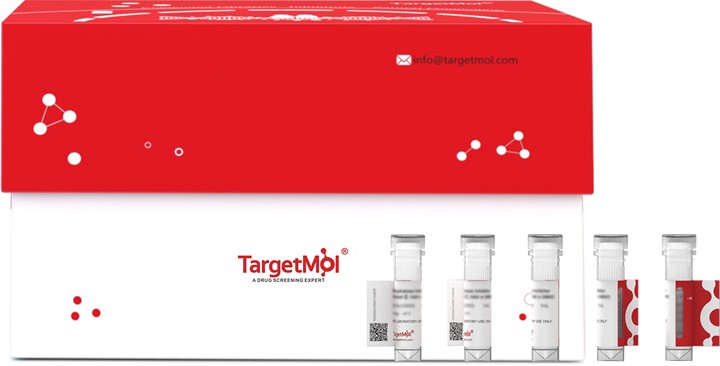 Your shopping cart is currently empty
Your shopping cart is currently empty
RAMP3 Protein, Human, Recombinant (hFc)
RAMP3 belongs to the RAMP family. Members of this family are single-transmembrane-domain proteins, called receptor (calcitonin) activity modifying proteins (RAMPs). RAMPs have a wide biological distribution; high concentrations are found in the brain, lung, liver, heart and spleen with lower expression levels present in the testes, gastrointestinal tract and thyroid. RAMPs are type I transmembrane proteins with an extracellular N terminus and a cytoplasmic C terminus. They are required to transport calcitonin-receptor-like receptor (CRLR) to the plasma membrane. CRLR, a receptor with seven transmembrane domains, can function as either a calcitonin gene-related peptide (CGRP) receptor or an adrenomedullin receptor, depending on which members of the RAMP family are expressed. In the presence of RAMP3 protein, CRLR functions as an adrenomedullin receptor.

RAMP3 Protein, Human, Recombinant (hFc)
| Pack Size | Price | USA Warehouse | Global Warehouse | Quantity |
|---|---|---|---|---|
| 5 μg | $79 | 7-10 days | 7-10 days | |
| 10 μg | $129 | 7-10 days | 7-10 days | |
| 20 μg | $208 | 7-10 days | 7-10 days | |
| 50 μg | $419 | 7-10 days | 7-10 days | |
| 100 μg | $812 | 7-10 days | 7-10 days |
Product Information
| Biological Activity | Activity testing is in progress. It is theoretically active, but we cannot guarantee it. If you require protein activity, we recommend choosing the eukaryotic expression version first. |
| Description | RAMP3 belongs to the RAMP family. Members of this family are single-transmembrane-domain proteins, called receptor (calcitonin) activity modifying proteins (RAMPs). RAMPs have a wide biological distribution; high concentrations are found in the brain, lung, liver, heart and spleen with lower expression levels present in the testes, gastrointestinal tract and thyroid. RAMPs are type I transmembrane proteins with an extracellular N terminus and a cytoplasmic C terminus. They are required to transport calcitonin-receptor-like receptor (CRLR) to the plasma membrane. CRLR, a receptor with seven transmembrane domains, can function as either a calcitonin gene-related peptide (CGRP) receptor or an adrenomedullin receptor, depending on which members of the RAMP family are expressed. In the presence of RAMP3 protein, CRLR functions as an adrenomedullin receptor. |
| Species | Human |
| Expression System | HEK293 Cells |
| Tag | C-hFc |
| Accession Number | AAH53852.1 |
| Synonyms | receptor (G protein-coupled) activity modifying protein 3 |
| Construction | A DNA sequence encoding the human RAMP3 (AAH53852.1) (Met1-Val118) was expressed with the Fc region of human IgG1 at the C-terminus. Predicted N terminal: Arg 24 |
| Protein Purity | > 95 % as determined by SDS-PAGE |
| Molecular Weight | 37.8 kDa (predicted); 28-31 kDa (reducing conditions) |
| Endotoxin | < 1.0 EU/μg of the protein as determined by the LAL method. |
| Formulation | Lyophilized from a solution filtered through a 0.22 μm filter, containing PBS, pH 7.4. Typically, a mixture containing 5% to 8% trehalose, mannitol, and 0.01% Tween 80 is incorporated as a protective agent before lyophilization. |
| Reconstitution | A Certificate of Analysis (CoA) containing reconstitution instructions is included with the products. Please refer to the CoA for detailed information. |
| Stability & Storage | It is recommended to store recombinant proteins at -20°C to -80°C for future use. Lyophilized powders can be stably stored for over 12 months, while liquid products can be stored for 6-12 months at -80°C. For reconstituted protein solutions, the solution can be stored at -20°C to -80°C for at least 3 months. Please avoid multiple freeze-thaw cycles and store products in aliquots. |
| Shipping | In general, Lyophilized powders are shipping with blue ice. |
| Research Background | RAMP3 belongs to the RAMP family. Members of this family are single-transmembrane-domain proteins, called receptor (calcitonin) activity modifying proteins (RAMPs). RAMPs have a wide biological distribution; high concentrations are found in the brain, lung, liver, heart and spleen with lower expression levels present in the testes, gastrointestinal tract and thyroid. RAMPs are type I transmembrane proteins with an extracellular N terminus and a cytoplasmic C terminus. They are required to transport calcitonin-receptor-like receptor (CRLR) to the plasma membrane. CRLR, a receptor with seven transmembrane domains, can function as either a calcitonin gene-related peptide (CGRP) receptor or an adrenomedullin receptor, depending on which members of the RAMP family are expressed. In the presence of RAMP3 protein, CRLR functions as an adrenomedullin receptor. |
Dose Conversion
Calculator
Tech Support
| Size | Quantity | Unit Price | Amount | Operation |
|---|

Copyright © 2015-2025 TargetMol Chemicals Inc. All Rights Reserved.



